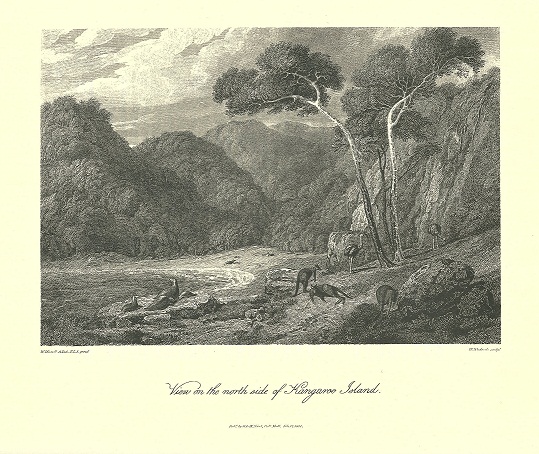On land
Sunday 4 September finds Samuel Stephens deeply depressed. ‘I cannot and will not endure this state of things it shall be mended by some means or other’, he confides to his diary. He and Captain Martin put their heads together and the experienced captain devises a plan to try to get everyone working together again. The next day he invites Thomas Beare and Cornelius Birdseye on board the John Pirie for lunch. Stephens follows separately and all four sit down to thrash things out in the captain’s cabin. To the relief of all concerned they reach a cordial agreement and all return to shore together. The next day Stephens feels he can relax a bit: ‘I lay in bed till after 6 & on rising most sincerely rendered thanks to Almighty God for the now really happy, orderly and industrious appearance of our settlement. A more marked change I never witnessed’, he records. Over the following days others also come back to work. On 6 September his ‘last rebel’, Mr Schreyvogel, asks pardon and returns to work. Stephens reflects that perhaps the little rebellion has worked in his favour after all! So ends the first industrial dispute in the history of the South Australian province.
Colonel Light meanwhile has tired of waiting for the Cygnet and decides to move on to the mainland. He hires one of the sealers (Cooper) and his two native ‘wives’ to accompany them, in the hopes that the women will hunt for them, but also liaise with local tribes. Woodforde’s diary entry for 6 September includes useful information about these earlier settlers. We learn that they cross ‘frequently’ to Cape Jervis and that they have ‘stolen’ the women who live with them. Nevertheless, the portrait of Henry ‘Walland’ (there are various spellings) and his farm is quite positive and we are told that he is called the ‘Governor’.
By 8 September Light has landed at Cape Jervis and is delighted with what he sees. ‘At two, I went on shore, and was enchanted with the appearance of the whole’, he writes. Pullen is equally enthusiastic about the landscape of ‘Nature’s garden’ before them: ‘it was indeed beautiful, presenting more the appearance of a park than land that had been for centuries trodden by uncultivated savages’, he writes. They set to and plant their own garden using seeds brought with them, and ceremoniously name the bay after the brig Rapid.
The next day the Cygnet finally sails into Nepean Bay to be met by Captain Morgan in his whaleboat. We learn that a new baby has arrived during the voyage, bringing the total of souls on board to 100. But for once the godly captain indulges in a little uncharitable aside: ‘the ship was to be here as soon as ourselves but is 45 days after so much for bosting [sic]’, he writes.
At sea
It is an eventful week on the Africaine. A new little settler makes his appearance during a howling gale and is promptly named James Africaine Paul. All of the men in steerage are banished to the deck regardless of the weather to give the poor mother some privacy. And the Gouger’s serving girl Margaret Clark is in trouble again, this time for biting a fellow servant on the arm so that the blood flows. Discipline is swift. The captain orders the hair on one side of her head to be shaved off, but Margaret remains defiant, treating the whole affair as a ‘good joke’. Robert Gouger is appalled and wonders if she is ‘deranged; if not surely there never was so malicious and designing a little jade in human guise’, he writes. They contemplate abandoning her to the Committee of the {tooltip} Children’s Friend Society {end-text} The Children’s Friend Society was one of a number of schemes designed to promote child migration as a means of improving public order. It was formed in 1830 as the ‘Society for the Suppression of Juvenile Vagrancy, through the reformation and emigration of children’ and by 1832 had sent children to the Cape of Good Hope and the Swan River Colony. Others were sent to Canada {end-tooltip} at the Cape.
By contrast, things are fairly quiet on the Buffalo, until the dog Lion falls overboard. He is a long distance from the ship when they discover him gone, but they manage to tack around and pick him up ‘no worse’, as Young Bingham Hutchinson reports. On the Tam O Shanter meanwhile a suspected thief is brought to ‘trial’, but gets off for the ‘Want of further Everdance’. [sic]
Language warning: Please note that these sources contain language which is today considered offensive. It has been retained as it is part of the historical record and evidence of past attitudes.


